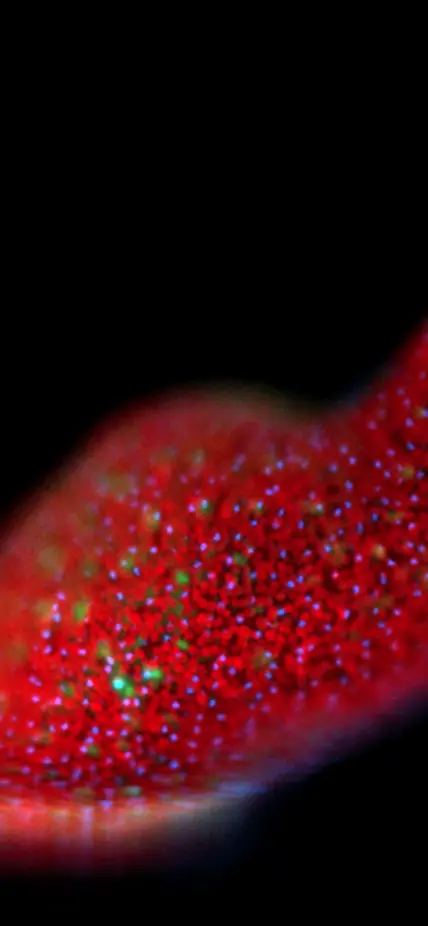Palo Alto, CA— It’s a microbial world; we’re just living in it.
In recent years, researchers have revealed that complex microbial communities shape organismal biology and ecosystem dynamics. Elucidating the details of these relationships and the molecular signals and pathways underpinning them is driving new breakthroughs in the life sciences.
Recent Stanford University-led work from a team including Carnegie Science algal specialist Adrien Burlacot investigated the relationship between marine worms with regenerative capabilities, called acoels, and the photosynthetic microalgae that live inside them.
Together, these organisms form a holobiont, representing the next stage of evolution of a symbiotic relationship. Because holobionts represent a relatively new concept, there is still much to learn about the nature of the relationships that define them.
“Understanding how this animal-algae interaction works could potentially be harnessed to improve crop yields, accomplish conservation goals, and enhance personalized medicine,” explained Burlacot.
The microscopic phytoplankton are capable of making food by converting the Sun’s energy into sugars and fats by the biochemical process of photosynthesis. They share these nutrients with the worms, which in turn provide them with shelter inside their strange physiology. Their name comes from a Greek word for “no cavity,” because the worms have no separation between their inner and outer organs, called a coelom. All their organs share the same space.
Stanford professor Bo Wang partnered with Burlacot and others—including Carnegie Science Board of Trustees member Stephen Quake, also of Stanford, and James Sikes of the University of San Francisco —to probe the molecular basis of the relationship between the acoel Convolutriloba longifissura and the microscopic algae Tetraselmis. They found that, when the worm regenerates following an injury, a genetic factor that takes part in the acoel regeneration also controls how the algae inside of them reacts.
“We don’t know yet how these species talk to each other or what the messengers are,” said Wang. “But this shows their gene networks are connected.”
“There was no guarantee that there was communication because the algae are not within the acoel’s cells, they’re floating around them,” added Sikes.
Animal regeneration requires communication across many different cell types, but in this case, it also involves communication between species. The researchers were curious about how the algal colonies inside reacted to this process. They were surprised to discover that photosynthesis wasn’t required for acoels to regenerate; they could do it in the dark. But the ability to perform photosynthesis was still necessary for their long-term survival.
Using sophisticated sequencing methods, the researchers were able to differentiate the genes of the two species and figure out which pathways were responding to injury. By developing new methods to measure photosynthesis in regenerating acoels in the Burlacot lab, they realized that the algae inside were undergoing a major reconstruction of their photosynthetic machinery at the same time.
It turns out that during regeneration, both the acoel’s regrowth and the algal photosynthesis appeared to be controlled by a protein in acoels called runt. In the early stages of regeneration, right after injury, runt is activated. At the same time, algal photosynthesis drops off. And when the researchers used genetic engineering tools to prevent runt from doing its job, normal regeneration-period worm and algal responses were halted.
“Runt is a transcription factor—a protein that helps regulate gene expression—and it’s highly conserved across species,” Burlacot said. “Our work shows that it doesn’t just control regeneration in acoels; it also provides a way for the animal to control algal photosynthesis. This presents exciting new research opportunities for understanding how photosynthetic holobionts harness and control the power of photosynthesis”
Banner Image caption: This acoel is a marine worm with symbiotic algae that is capable of regeneration. Fluorescence imaging shows the algal cells in red, and the acoel cells in blue and green. Courtesy Dania Nanes Sarfati
